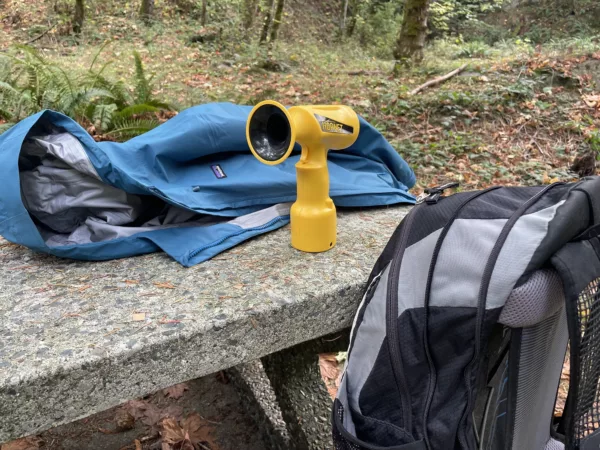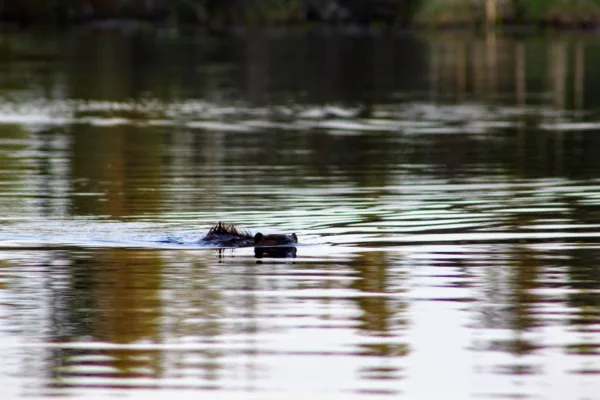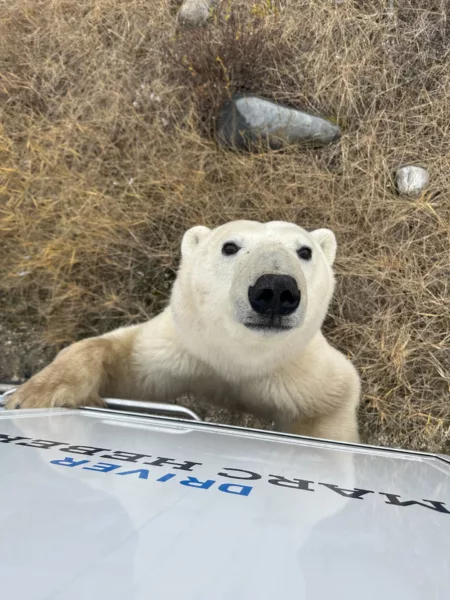Essential Hiking Gear Checklist
A real hike is a lot more than just a walk in the park. A real hike has elevation. Seclusion. Wilderness. Serenity. And a real hike requires self-sufficiency.
In short—you need the right gear to ensure your day-hike finishes as well as it starts.
We’re here to help, with a handy checklist of essential items you need for a day-hike excursion. The following list is suitable for a full-day’s hike in a moderate to challenging environment.
(Scroll to the bottom to find the best way to buy the right gear!)
First, you’ll need something to put it your gear in. Which starts us at:
Backpack
Well-fitted and comfortable. When buying a backpack, ensure you try it on with a load. (Grab a sleeping bag from the store shelves and stuff it in.) Adjust the straps and move around. Does it stay put? Any pinch points? A quality hiking day-pack should have a hip-strap as well. This should sit just atop your hip-bones and will support the bulk of your load.
A day-pack should be light and small, yet roomy enough to carry all your essentials without feeling overstuffed. Look for something in the 20-litre range. The ability to hold a hydration bladder is a feature you’ll come to love as well.
Footwear
The further from help you roam, the more serious the consequences to something as simple as a sprained ankle. Hiking shoes are fine for gentle strolls in woodsy parks, but if there’s going to be an elevation change, you need footwear with ankle support. Always try before you buy. Different brands fit differently—as much as a full size at times—and your foot has specific needs. Modern boots don’t require long break in periods. If it’s terribly uncomfortable at the store, it won’t get better on the trail.
More features to consider: Waterproofing—it won’t keep your feet dry if you step in a knee-deep puddle, but it’ll stop trail-muck from seeping in and likely dry faster too. Breathability—if you’re into speed-hiking, or live in a hot climate, look for a boot with a lot of venting. Consider your intended terrain. Are you going off-trail? You’ll need a stiff-soled, high-cut boot. Easy on-trail hikes only? Soft and comfortable is key; a lower-cut will suffice.
Socks
As important as boots! Never hike in cotton socks; they’ll rip blisters in your heels faster than you can say ouch! Wool, wool-blend or synthetic fibers are your friends during athletic pursuits. Not only will they wick sweat, but they’ll save your tootsies from the day-ending abrasions cotton socks are sure to inflict. Splurge on well-fitted, quality socks and you’ll be a happy hiker.

Apparel
Shirts made from merino wool and wool-blends are ideal for hikers. In hotter weather, full-synthetics (nylon, polyester, polypropylene) may perform even better.
Look for shorts/pants and shirts made from lightweight, breathable, quick-dry and wicking material. You want protection from sticks, rocks, brambles and the sun as well as comfort; nylon or cotton-or wool/synthetic blends are ideal. Shorts made of similar fabrics are great in hot weather—but consider bugs, bushwhacking and sunburn before you venture out with exposed legs. And don’t forget about your underwear! Look for similar athletic fabrics for your base layers too; the wrong undies can result in terrible chafing. (Never hike in swimwear, even if you’re hiking to a lake. Chafe-city!)
Consider the season—what are the worst conditions you’re likely to encounter? Pack an extra layer that can handle this contingency.
And always bring a waterproof jacket, no matter the season. Weather changes quickly in the mountains or on the coast particularly; a rainstorm can come out of nowhere.
Other considerations vary with the season—a lightweight toque and gloves are considerations in spring, fall and winter. (Or even in summer if you’re headed to the high alpine.)
Sun Protection
Even in northern latitudes, being sun-safe is vital. At minimum, you require sunglasses, SPF 30 or higher sunscreen (sweat-proof) and a brimmed hat. Trucker-style caps are great for summer hiking, as they offer solar protection your need yet the mesh-back allows heat to escape and they’re easy to cram into a pack.
Nutrition & Hydration
Don’t just rely on eating before and after. Hiking can easily burn 500 calories per hour. Plus, you want to enjoy yourself—not get to the summit “hangry” and eager to leave. Energy bars are great, as are high-protein snacks like nuts and beef jerky. Dried fruit can offer a rush of energy when you’re feeling tired. Look for wholesome foods that pack a lot of calories and nutrients into as little weight as possible. And take a treat too, like chocolate chip cookies or a candy bar. Hey—you’re there to enjoy yourself!
Hydration is one of the most important considerations. A typical day-hike (six to eight hours) should see you consume at least two to three litres of water total, more if it’s hot out, taken in small sips every 15 minutes. (This is after a half-litre before you leave and considering a half-litre immediately when you get home.) Minor dehydration symptoms include headache, nausea and lack of energy. More severe symptoms can be life-threatening. A hydration pack is the best way to keep your H20 flowing.
Navigation & Communication

You should always hike with the following: a trail map, a compass (and the knowledge of how to use it) and your phone—or a satellite communication device if you’re going out of range. A modern smartphone likely has the first two items built-in—and that’s super handy—but batteries die, devices get dropped and cell service disappears. Always have old-school backups.
Safety & Emergency Preparedness
Your day-hike is likely going to go perfectly as planned. But that doesn’t mean you should assume it’s going to go perfectly as planned. Always prepare for emergencies. Many of these items can stay in your day-pack, so they’re ready when you are.
First-Aid Kit
Your first-aid kit should include at minimum: treatment for blisters, adhesive bandages, gauze, tape, disinfectant, painkillers, relevant prescription drugs (if applicable) and water purification tablets. Bonus points for adding a whistle. This can all be stuffed into a very compact case or even a zip-lock bag. You won’t even notice it’s there.
Fire (Waterproof Matches or Fire-Steel and Fire-starters)
Consider a fire-steel, for its durability, longevity and compactness. And make your own tinder/fire-starter by soaking a few cotton balls in Vaseline then stuffing them in a zip-lock. If needed, fluff the ball up, put a spark to it and be amazed by the burn!
Knife/Multi-Tool
A classic Swiss Army knife or multi-tool is invaluable for repairs, first aid or other emergencies. It should have at minimum: blades, scissors and a screwdriver. If the hike is seriously out-of-the-way, you could up the ante with a small hatchet.
Illumination (Headlamp or Flashlight)
Bonus points if you brought extra batteries.
Extra Insulation (A Warm Layer and/or Space Blanket)
A fleece stuffed in your pack could make your day more comfortable; a tiny, lightweight space blanket could save your life.
Other Considerations
Lightweight, collapsible trekking poles are often useful—they can really lessen the strain on your knees during lengthy descents. Binoculars are great for birdwatchers. Most people have an adequate camera on their phones, but serious photogs might want to carry a DSLR camera with a zoom lens. (Modern mirrorless cameras lessen the load and match DSLRs in quality.) And if you take an expensive camera, consider a five-litre dry bag to hide it in if a sudden rainstorm hits. If dangerous wildlife is a concern, bear spray or an air horn are great deterrents. A field guide for plant identification is sometimes useful.
Solo hikers: always leave an itinerary with someone back home! And double-down on safety precautions.
Customize this list to your specific needs and your local environment as well. Perhaps you also need a snakebite kit, an extra pair of eyeglasses or contact lenses, a knee brace, etc…?
The list may seem like a lot, but if packed properly and well-thought-out, it will easily fit in a daypack. Hiking is fun—when you’re prepared. So have fun out there!
Do You Have the Right Gear?
Find it all here—at ultra-low prices:
Explore’s Live the Adventure Club Gear Box
When you purchase something via the links in our articles, we may earn a small affiliate commission. Read more about our policy.















